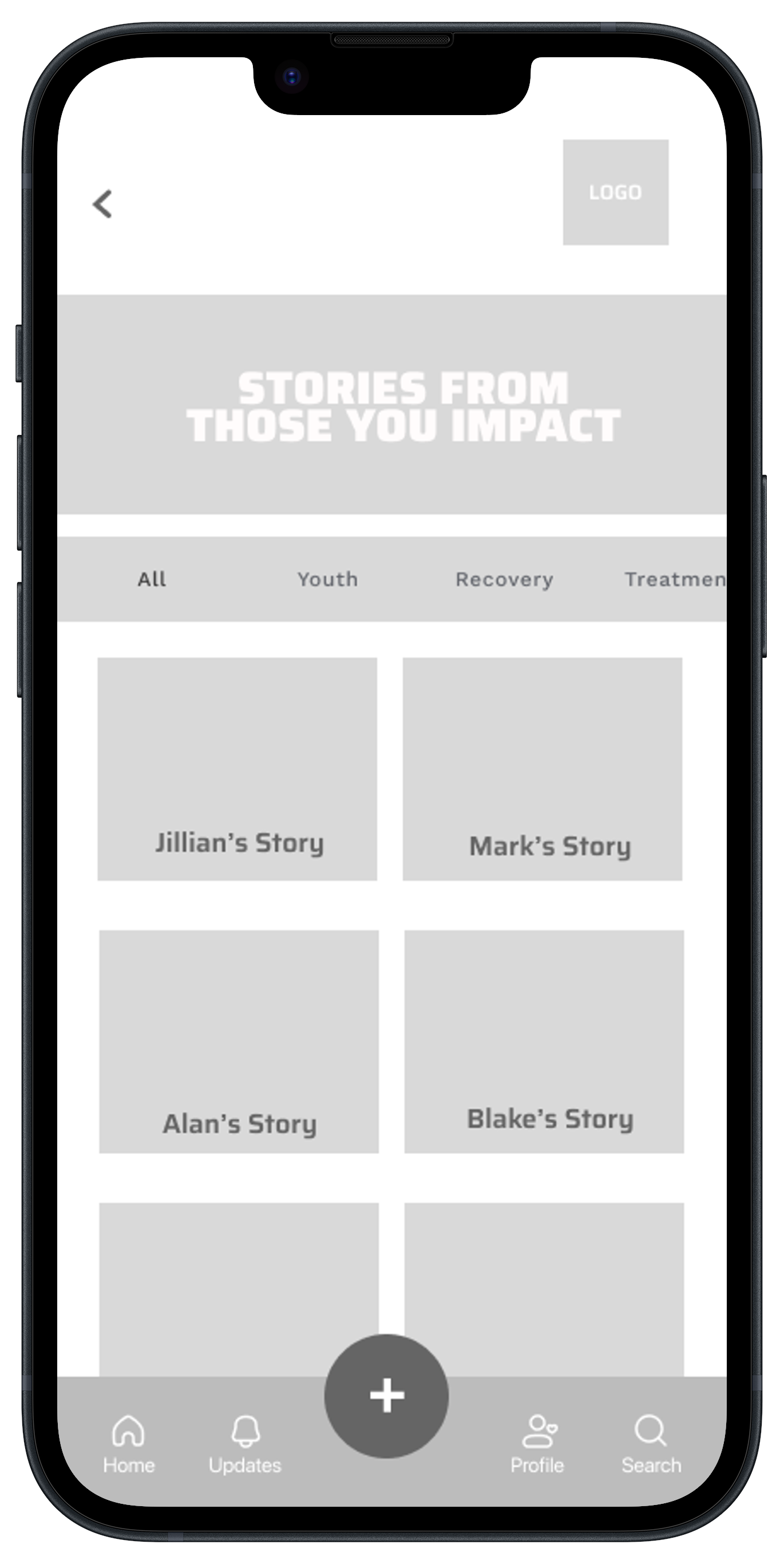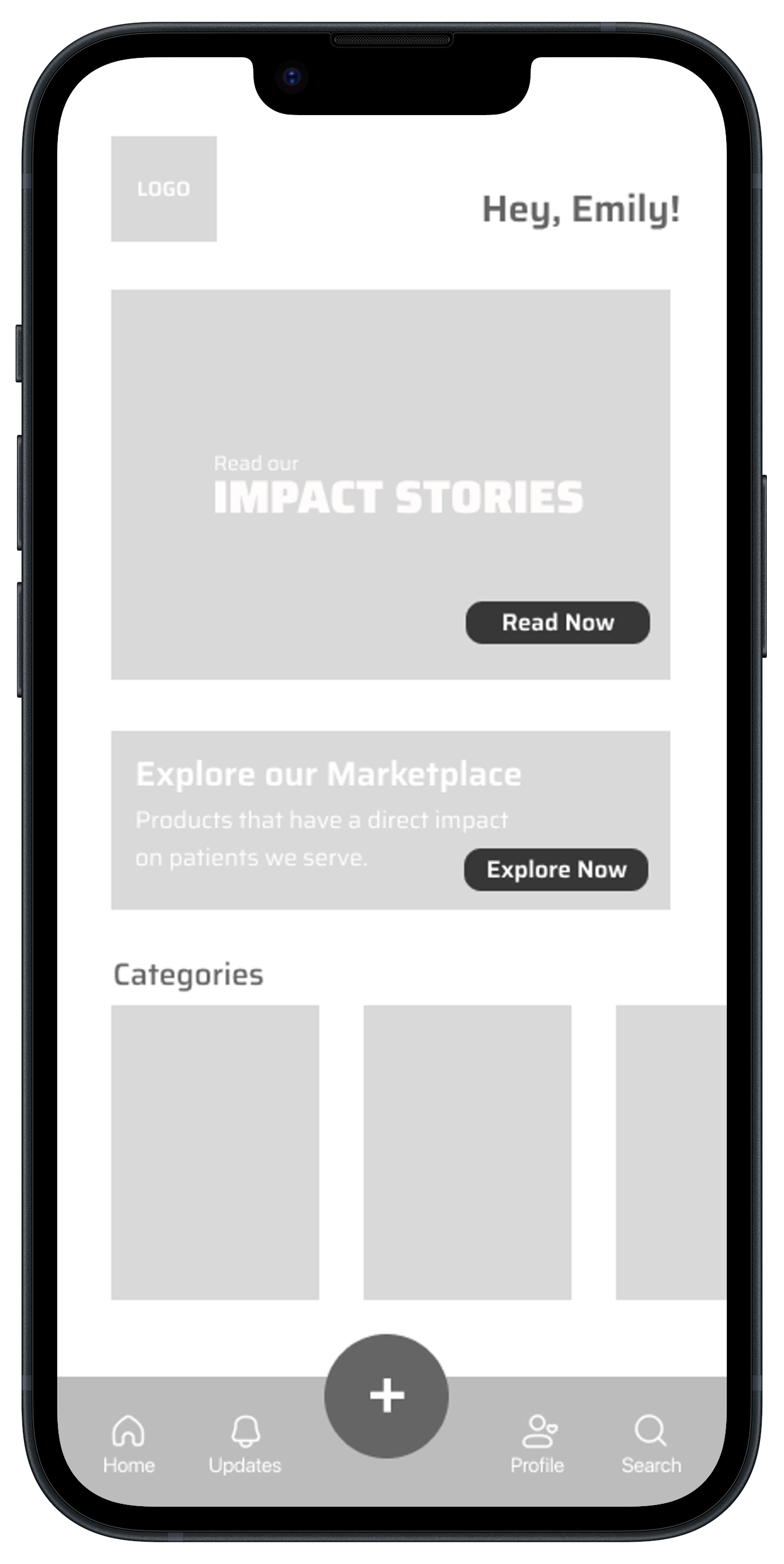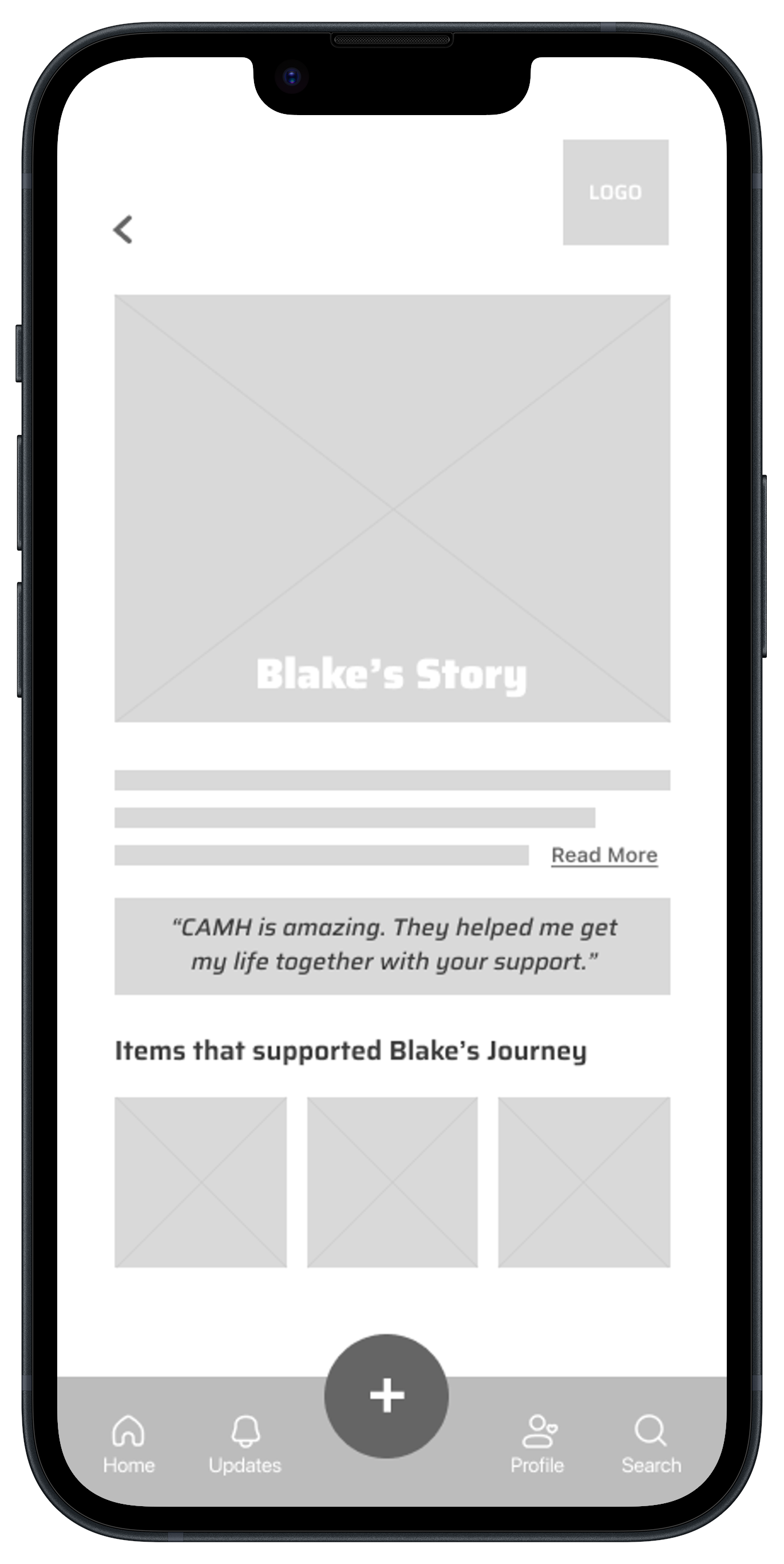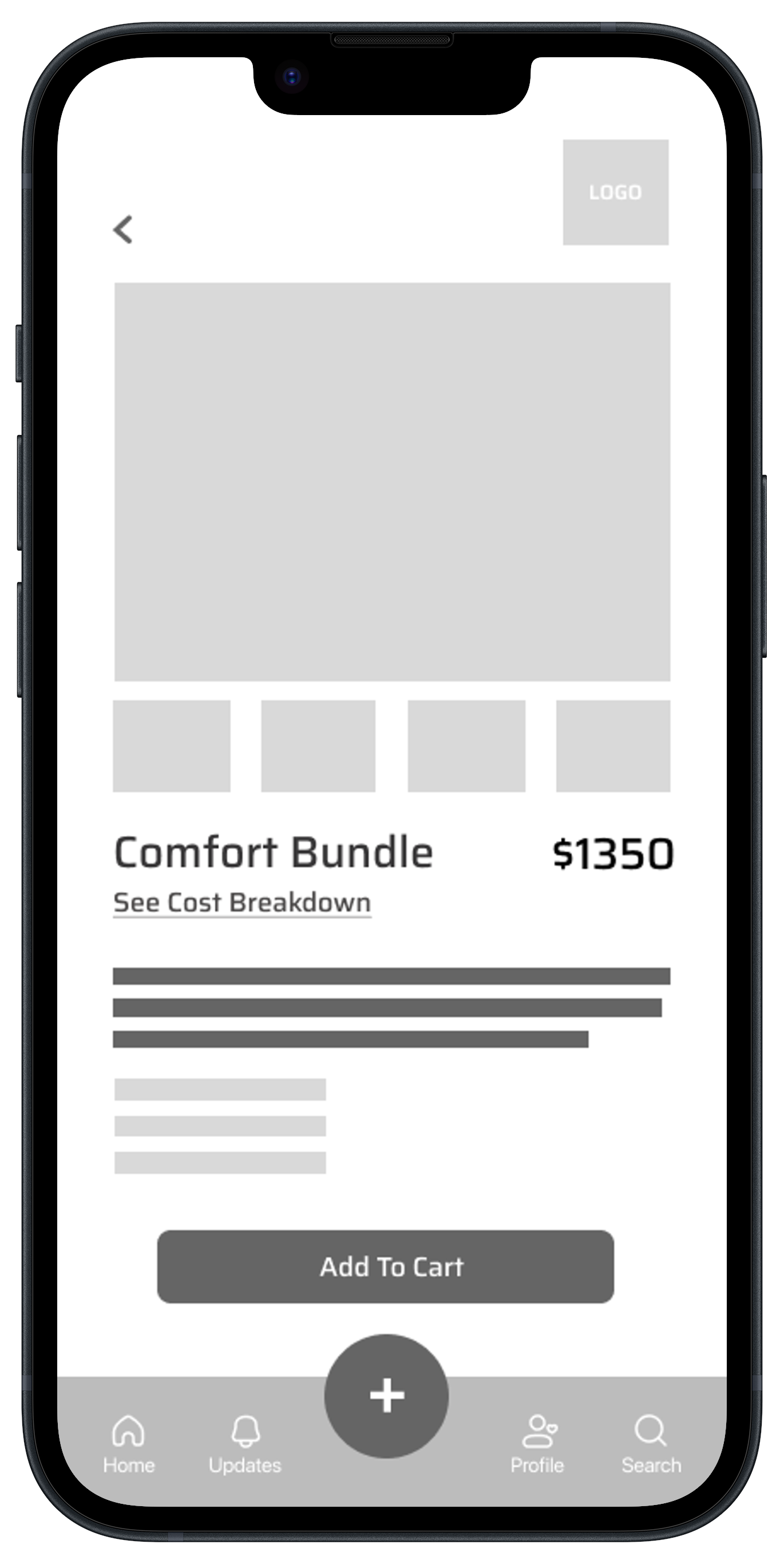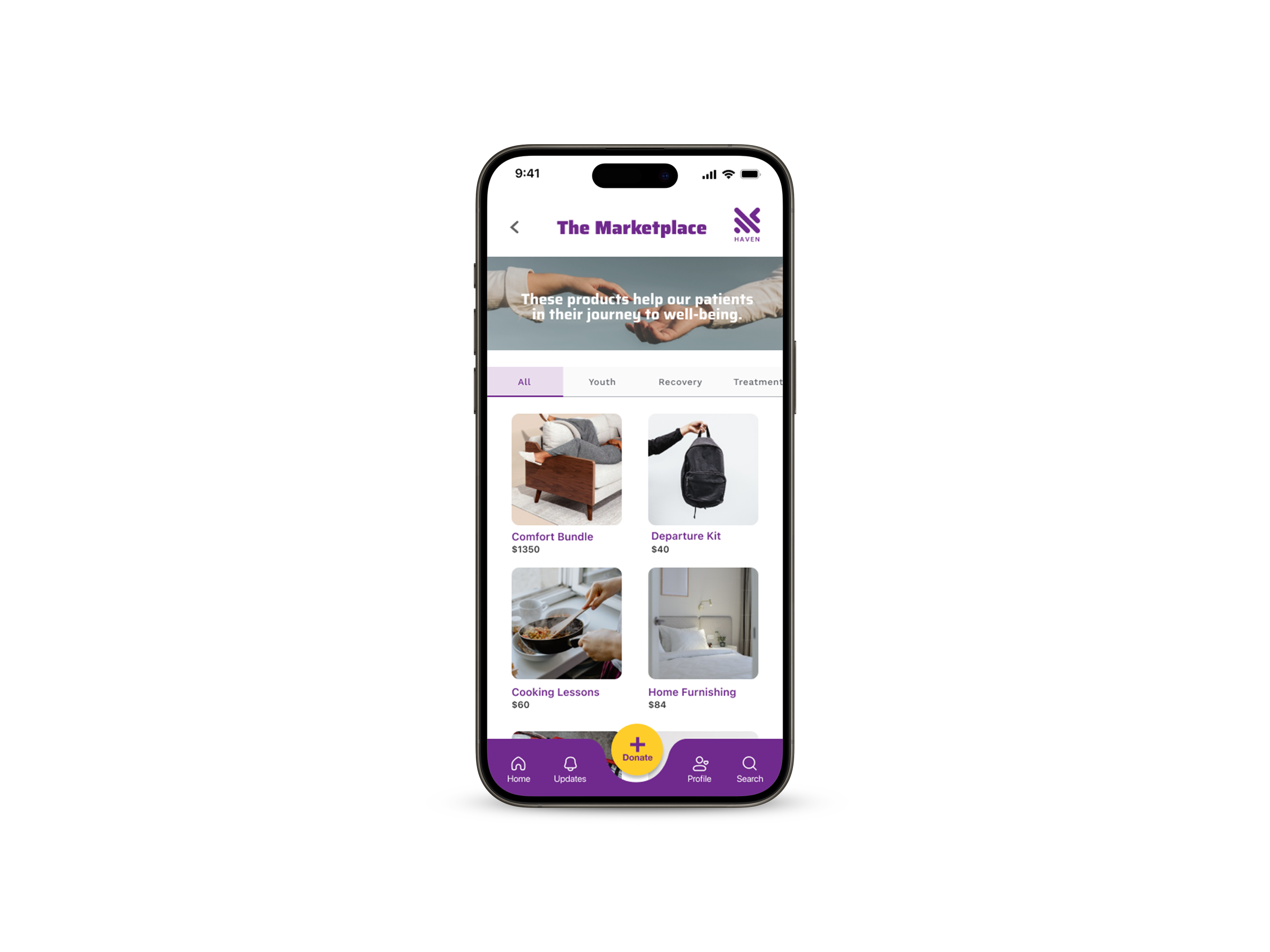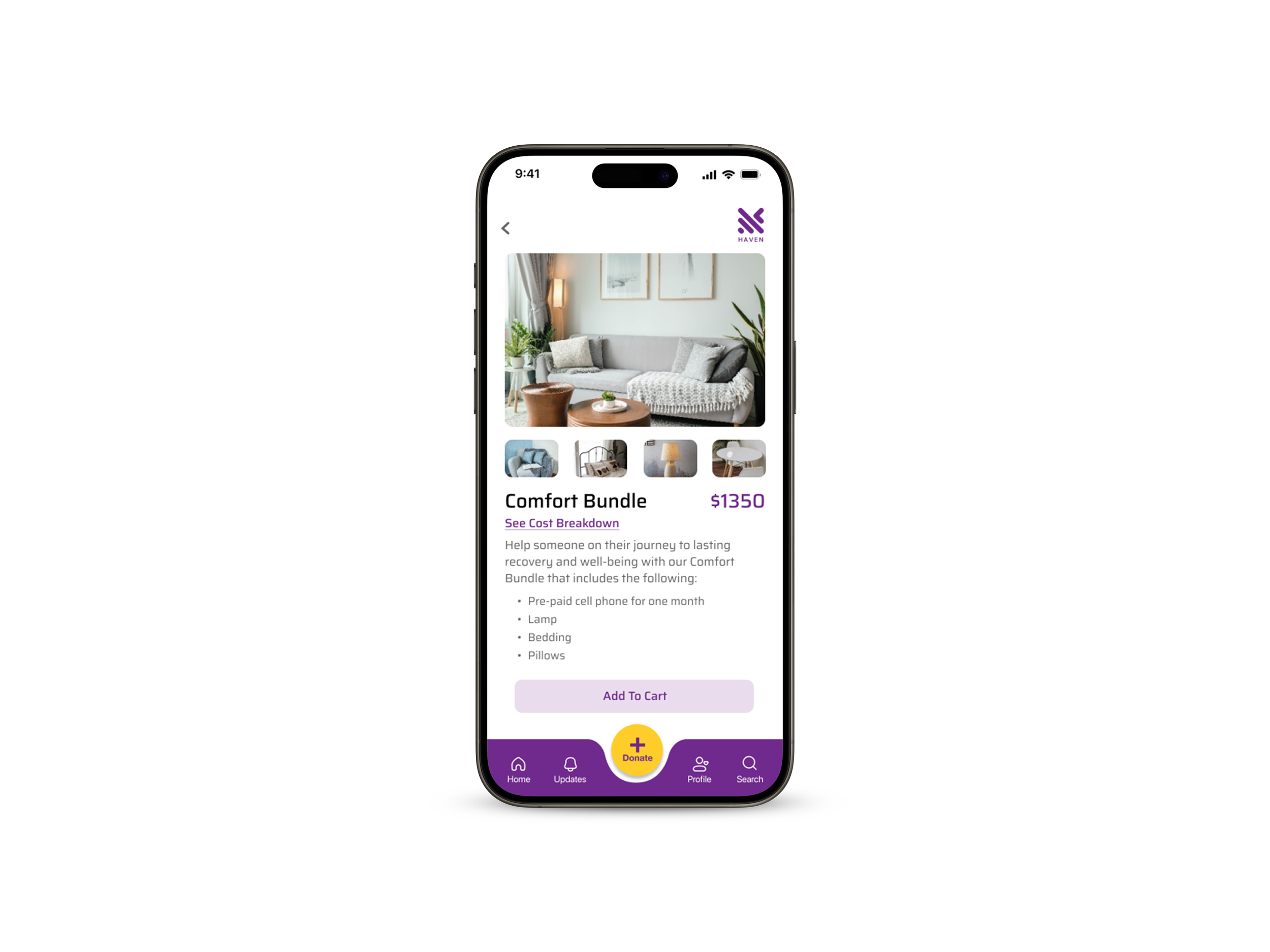
Centre for Addiction and Mental Health.
Changing the way we donate.
As a team of five, we set out to discover, evaluate, and overhaul the current state of the donor experience for the Centre for Addiction and Mental Health.
What we did
-
We began our process by evaluating the current state of the Centre for Addiction and Mental Health “product page.” This platform is where donors have the option to purchase items that are needed by patients of CAMH. They range from departure packages, to outpatient therapy sessions.
-
After evaluation, we dove into researching CAMH, and how current donors are utilizing the platform or if they are. We found some valuable insight into how millennials specifically are less likely to donate due to a lack of transparency.
-
We started brainstorming how we could overhaul the current state to drive more millennials to donate through the currently available platform, by including a more transparent, and user-friendly interface.
Why we did it
CAMH donors encounter a notable hurdle in their contribution experience, stemming from a lack of transparency regarding the utilization of their funds. The absence of clear information on the allocation and impact of donations creates uncertainty, potentially causing hesitation among potential donors. This lack of transparency diminishes trust and weakens the motivation to support CAMH's crucial initiatives in mental health and addiction treatment.
NUMBERS.
Current State
The existing state of the CAMH donor platform, particularly in relation to the 'other ways to donate' experience, was found to be notably unclear. During our comprehensive investigation into the donation process, we identified a significant lack of information regarding the products available for donors to purchase. Notably, certain items and packages were priced at $1000 and above without a description. Recognizing the potential impact of transparent communication on fostering trust and engagement, we proposed an overhaul to provide detailed insights into how these funds would be utilized. This strategic adjustment aimed to align with CAMH's overarching goal of increasing donations, emphasizing the urgent need for these items by CAMH patients. By addressing these minor inefficiencies, we sought to prevent the loss of potential donors and optimize the fundraising process for the benefit of CAMH and its patients.
Identified absence of product descriptions and cost breakdown on the product page
Conducted research interviews, revealing transparency as a key factor in encouraging millennials to donate
Found that millennials have a strong desire to support causes through both financial contributions and volunteering
Noted the challenge in decision-making for millennials when lacking information on fund allocation and impact
We focused on..
Three Days.
Faced with a tight three-day timeframe to enhance the CAMH donor experience, specifically targeting Millennials for increased engagement, we opted for a rapid and efficient approach. We swiftly transitioned from brainstorming to sketching ideas and immediately dived into creating wireframes. This strategic workflow allowed us to maximize our time, conduct effective testing, and make agile pivots as needed to ensure the development of a more valuable and transparent solution for CAMH donors.
After finalizing our wireframes we jumped into user testing, to ensure our overhaul was solving the problem, and to get insight as to any changes that would be preferred by users.
Testing.
Feedback: Our written copy confused users, specifically where it said Other Ways To Give. The copy underneath was misleading.
Action: We revised our copy to be a clear call-to-action.
Feedback: Once again our written copy was confusing for users specifically on the hero image area. All categories did not guide users about the clear intention of the screen they were on.
Action: We revised the copy to clarify what the purpose of the marketplace is.
Feedback: During testing it was said that despite our attempt to make the donation cost transparent it still wasn’t as clear as it could be.
Action: We redesigned the cost breakdown, and gave exact details of the allocation of funds from the specific package or item purchased by the donor.
The Results.
Some notes on design decisions.
You might be wondering? Why did they put a donation CTA button smack dab in the middle of the navigation bar. Well the reason behind this was to ensure that users were able to quickly engage in the donor experience while navigating through other features of the app, such as while reading the Impact Stories section. Think about this, you’re reading an inspiring story and have empathized deeply with this individual, now you want to quickly act on a donation. This fixed position CTA is there to immediately initiate the donation process.
Feedback from our testing phase, confirmed our assumption about this CTA, as well as our decision to keep Impact Stories at the forefront of the home screen. This decision was based on the hypothesis that potential donors want to read about the impact CAMH has on individuals they are treating. Our test rounds confirmed that users feel more connected to the cause once they’ve empathized with donor recipients.
Marketing Site
We whipped up a quick marketing site to showcase how you could promote the new and improved CAMH app.
Our next steps
Now that we have completed the iOS version of the CAMH app, we would implement the same platform overhaul to their current website enabling donors to have the freedom to choose the location of their donation experience.
Impact
The brief but comprehensive overhaul of the CAMH donor experience, with a focus on transparency and clarity in fund allocation, proved highly successful with an estimated 24% increase in donations through the marketplace based on testing performed. The strategic enhancements effectively captured the attention and engagement of donors, particularly resonating with the millennial demographic. This approach will not only foster increased financial contributions but also strengthen the connection between donors and the impactful outcomes of their support, driving overall engagement and support for CAMH's mission.
Takeaways










